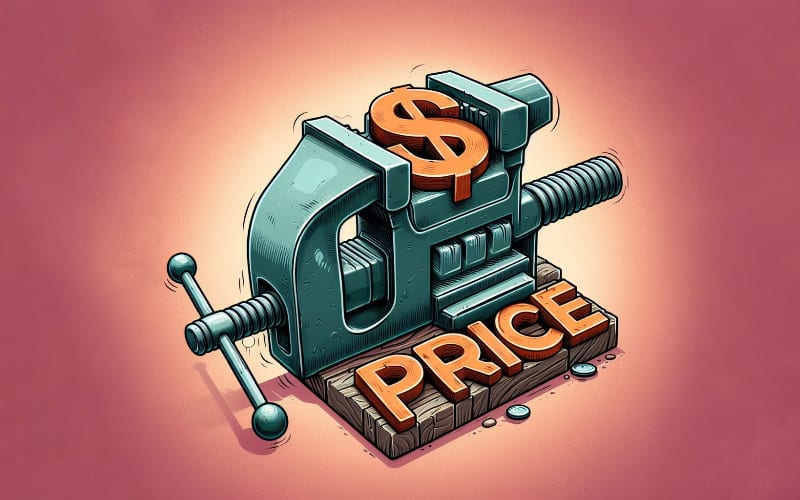With excess capital in the system, property cat rates could trend down at 1/1: Morgan Stanley

Given the amount of capital in the global reinsurance system, analysts at Morgan Stanley are asking how much lower pricing could decline in the property catastrophe line of business?
The equity analyst team that focuses on insurance and reinsurance at the multinational investment bank and financial services company say that after the recent earnings season investors are seeming more cautious on the direction of pricing for reinsurers.
Sentiment on pricing for property catastrophe reinsurance renewals has fluctuated in recent months.
Back at the start of the reinsurance conference season, the broad expectation seemed to be that while attachments, terms and conditions might hold, there was likely some room for pricing to soften at the January 2025 renewals.
Then, along came hurricanes Helene and Milton, which drove an initial change in the sentiment, as the industry began to plant the seed that pricing may now prove more stable in light of the expected industry losses from those catastrophe events.
But, with Helene and Milton both again showing that the primary insurers were likely to absorb the largest share of these loss events, particularly with hurricane Milton that saw loss expectations for that storm decline from the initial estimates, the sentiment itself softened somewhat.
But, Morgan Stanley’s analyst team also point to capital returns announced by major reinsurers around the recent earnings season, which while relatively sizeable in some cases are said “not enough to siphon excess capital from the reinsurance system.”
Reinsurer results “demonstrated resilience from catastrophes” the analysts explained, with some reporting lower than expected catastrophe loss figures.
However, the analysts state that on P&C reinsurance, “With commentary around terms & conditions likely to continue holding strong, we continue to be bullish on the sector.”
But they question, “Given the amount of capital in the system, how much lower will pricing decline for property-catastrophe? From our perspective, we believe pricing will likely decline by low to mid single digits, which is generally manageable.”
Pricing is likely to trend down, the Morgan Stanley team believe, saying, “Given the relatively manageable hurricane season risks thus far, and more muted pricing in 2024, pricing power could face some pressure in 2025.”
Adding that, “Strong underwriting led to reinsurers generally beating expectations on combined ratios. The recent capital return announcements from Arch Capital and RenRe could indicate a softer market environment going forward, as the return was not enough to siphon excess capital from the reinsurance system.
“Heading into Jan-1 renewals, barring any surprise major CAT events, pricing should decline.”
The analysts also explained, “As we progress through the end of the year, investors seem less optimistic on the reinsurance space. In our view, disciplined underwriting should help shield the reinsurers, making CAT losses more manageable as attachment points and tight terms & conditions continue to hold strong.”
The discussion of whether this is excess capital in the reinsurance system and how that could affect rates is a timely one.
Brokers have recently been forecasting an expectation that there will be around $10 billion of incremental property catastrophe reinsurance demand at the January 2025 renewal season.
But, with excess capital seemingly evident in the reinsurance system, is that sufficient to soak up excess appetite from reinsurers and of course the insurance-linked securities (ILS) market?
Readers will be aware that recent catastrophe bond issues have been pricing down and settling at attractive spread levels for their sponsors.
As we’ve explained, the catastrophe bond market went into the final quarter of the year with some excess cash itself, from certain managers that freed some capital in advance of peak hurricane season, as well as some that had raised some additional funds to deploy.
As the cat bond market pipeline is always relatively slow to build-up again after peak hurricane season ends, this meant early deals that came to market through October and November so far have been met with high investor appetites for new risk opportunities.
That has continued and almost every new cat bond has priced within guidance and below so far this quarter, with some pricing at what seem quite tight spreads.
Still, spreads remain historically high and the overall yield of the catastrophe bond market has remained also at a historically attractive level, but the trajectory has clearly been towards a slight softening of pricing in the cat bond market.
With some additional ILS capital being raised for private ILS strategies, those focused on collateralized reinsurance, retrocession and industry-loss warranties (ILW), while we’re also told responses to reinsurance sidecar offerings in the market are suggesting risk capital partners are being quite accommodating at this time, it suggests that there may be more excess in the system at this time.
This should also play into the renewals, but its important to add that in our conversations with ILS markets there remains a determination to sustain pricing at reasonable levels, while there continues to be little appetite to reduce attachment points and broaden terms.
One thing is certain, the end of year reinsurance renewals are likely to prove competitive, which can also add some pressure to prices.
With the catastrophe bond market leading the way in providing valuable pricing indications, as is typical at this time of year, it’s clear that sophisticated cedents may have an opportunity to use capital sources in the most efficient way possible, to maximise their renewal outcomes and reduce some of the renewal pressure that has proved challenging for many over the last couple of years.
All of which suggests market sentiment has swung back to where it was in early September. While how much additional capital may come to market in time for the year-end, could be a further wildcard with the potential to cause greater price pressure than currently anticipated.






